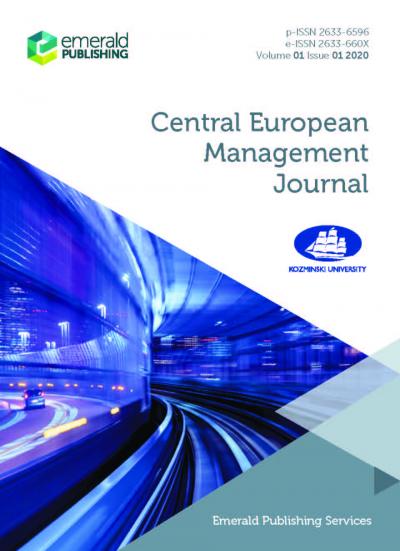Agility Versus Flexibility? The Perception of Business Model Maturity in Agricultural Machinery Sector Manufacturing Companies
Bogdan Nogalski
WSB University in Gdańsk

Przemysław Niewiadomski
The University of Zielona Góra

Agnieszka Szpitter
University of Gdansk

10.2020 28 (3) Central European Management Journal
DOI 10.7206/cemj.2658-0845.27








